Get PeakVisor App
Sign In
Search by GPS coordinates
- Latitude
- ° ' ''
- Longitude
- ° ' ''
- Units of Length

Yes
Cancel
Share ×

Scan the QR code and open PeakVisor on your phone
❤ Wishlist ×
Choose
Delete
Finland Proper, or Southwest Finland, is one of 19 regions of Finland. The modern state of Finland originated in this part of the country. Additionally, the Archipelago Sea, one of the largest clusters of islands in the world, is also located in Finland Proper. There are 563 named mountains in Finland Proper. Haukkavuori (121 meters / 397 feet) is the highest point. The most prominent mountain is Halsvaha (111 meters / 364 feet).
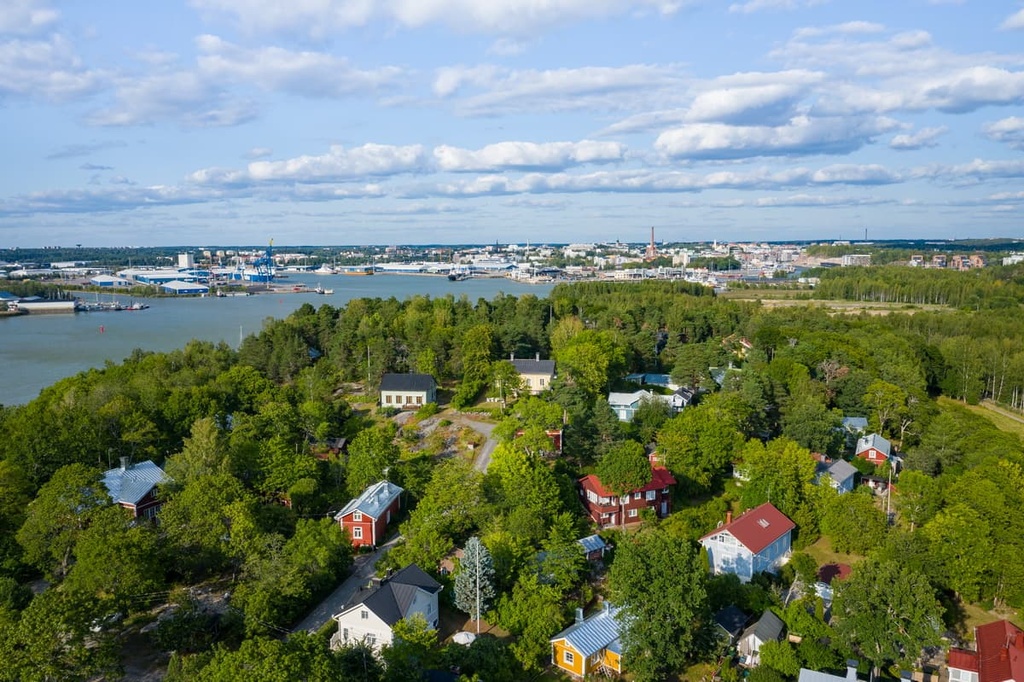
The somewhat strange name of the region, Finland Proper, comes from the fact that the modern state of Finland originated in this southwestern part of the country.
Historically, this small area in the southwest of modern Finland was called Finland by its neighbors, the Swedes and Russians, as well as the Norwegians and other Scandinavians, with whom Finns have had strong connections since very ancient times. The main city of the region, Turku, was the capital of the country before the capital was moved to Helsinki.
The word ‘Finland’ itself in English comes from the name of the people who have traditionally lived in this part of northern Europe. However, in Finnish, the Finns actually call their country Suomi, though the origin of this term isn’t entirely clear.
As a result, the region has a third name in Finnish: Varsinais-Suomi. This translates literally to Finland Proper.
However, the term ‘Finland Proper’ is usually used in a historical context. Southwest Finland is the modern name of the region, and it is the name that’s used on all contemporary maps and travel guides.
Finland Proper is located on the southwestern tip of Finland. Its total area is 10,910 sq km (4,212 sq mi).
The region is bordered by the Gulf of Finland to the south and the Gulf of Bothnia to the west (both gulfs are parts of Baltic Sea). Additionally, Finland proper shares its border with five other regions: Satakunta, Pirkanmaa, Tavastia Proper (Kanta-Häme), Uusimaa, and Åland Islands.

Southwest Finland is also a part of one of the official four major tourist regions of the country alongside the Helsinki metropolitan area, Lakeland in the east, and Lapland in the north. In this classification system, Finland Proper is also called “Coast and Archipelago.”
The city of Turku, the primary city in Southwest Finland, is located 168 km (104.3 miles) to the west of Helsinki. To travel this distance by car, it takes about 2 hours.
Another way to get to the region is, of course, by sea from Stockholm in Sweden. There are two huge ships from the Viking Line and Tallink / Silja Line ferry companies that cross the Baltic Sea overnight to bring you to Turku.
From Turku, you can then travel by Onnibus. This is the main budget bus company in the country and most tickets cost just a few Euros. Over the years, the company has developed a network of routes that bring you to literally every corner of the country.
You can also use the main state Matkahuolto bus company, or Finnish VR trains. Traveling on a Finnish train is a pleasure. For example, when you buy a ticket, you can get a free coffee to enjoy during your journey.
You can also travel around the archipelago islands by car, bus, bike or by a bicycle on the famous Archipelago Ring Road or Archipelago Trail.
The main islands of the archipelago are also connected by ferry service from several companies. The good news is that the main routes to the inhabited islands are free but some longer direct routes could cost you some money.
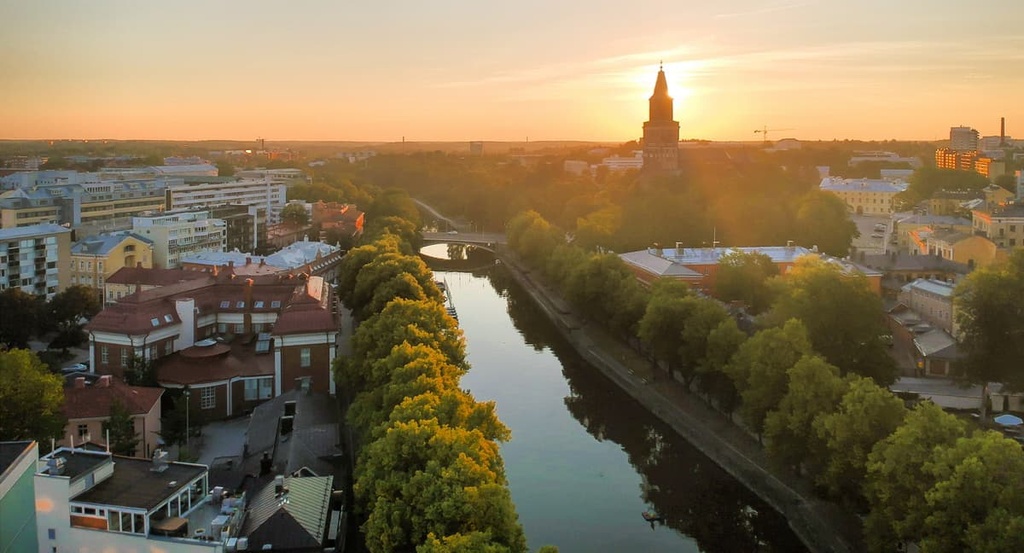
At the same time, the system of routes is very extensive and complex. To navigate your way around the region, start from the “Directions” section of the Archipelago National Park page on the Finnish national parks website. There is also a new Explorearchipelago.fi site for both Turku and Stockholm archipelagos, which will help you to learn how to travel to and between the islands.
The two main types of bedrock in the region are the same as for the rest of Finland: granites and gneisses. They can both be found on the mainland and the islands.
The tens of thousands of islands of the Archipelago Sea formed as a result of a geological process known as post-glacial rebound (isostatic rebound).
This is the process by which the land, which has long been covered by a layer of heavy glaciers, gradually rises above land that wasn’t as heavily glaciated. The process of post-glacial rebound that helped to create the Archipelago Sea started about 11,500 years ago. At that time, the ancient Yoldia Sea covered the land that would eventually become the archipelago’s islands.
Interestingly, this process continues to this day. In fact, the existing islands rise by about 5–6 mm per year. This might not seem very fast, but in geological terms, 5 to 6 mm a year is lightning speed.
The mainland part of the Finland Proper makes up about 80 to 85 percent of its territory. It is actively used for agriculture, so the typical landscapes are picturesque meadows and various arable lands with houses and farms. As elsewhere in Finland, pine, spruce, birch and mixed forests also occupy a significant part of the region.
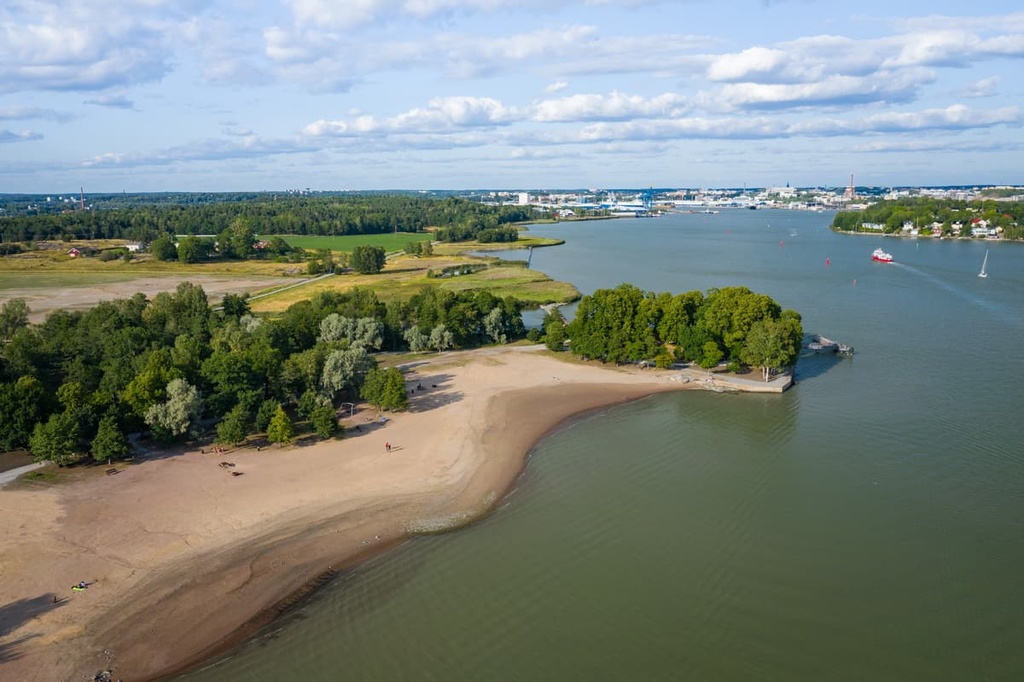
However, similar landscapes can be found in almost every other region of Finland, with the exception of Lapland.
The main feature of Southwest Finland's landscape, which is why tourists come here in the first place, is, of course, the region’s rugged coastline, its many fjords, and the Archipelago Sea.
This Archipelago Sea is a huge collection of large, medium, and small islands, as well as incredibly scenic skerries (from the ancient Scandinavian language "sker"—"a rock in the sea").
The largest island of the archipelago is Kimitoön / Kemiönsaari with an area of 686 sq. km (265 sq. mi). It is located in the southeastern part of the region. It is also one of the five largest and most touristy municipalities in the archipelago.
There’s also another large groups of islands, the Åland Islands, in the region. But, administratively, they are not included in the archipelago and they form their own distinct region in Finland.
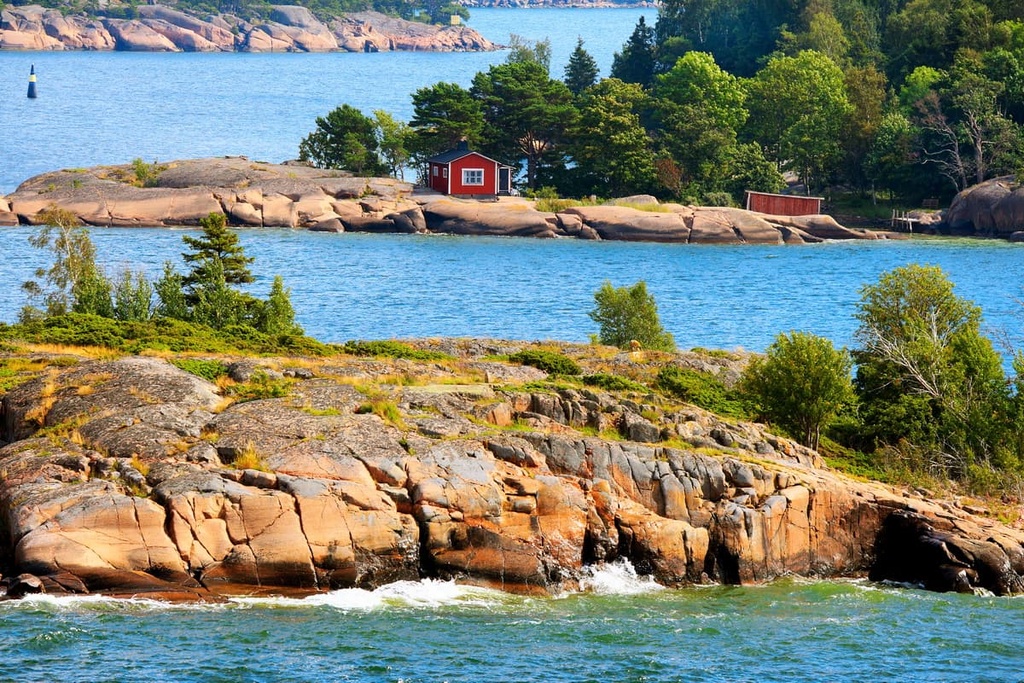
It is also important to know that islands do not make up the entire archipelago. Much of it is islets and rocks that stick out of the water, most of which are uninhabited because of their small size or remoteness from the mainland.
So, just how big is the Archipelago Sea? There is no exact answer to this question because of the difficulty in defining the very concept of “island” and data inaccuracies.
According to some sources, the Archipelago of Turku, as it is also called, is considered the largest sub-archipelago in the region by its total number of islands (40,000). However, the number of large islands of over 1 sq km (0.39 sq. mi) in area is only 257.
If we classify archipelagos by total land area, rather than by number of islands, then the largest archipelago in the world is the Malay Archipelago in the South China Sea. This archipelago has about 24,000 islands in Indonesia and the Philippines, but they are much larger in area than those in the Archipelago Sea.
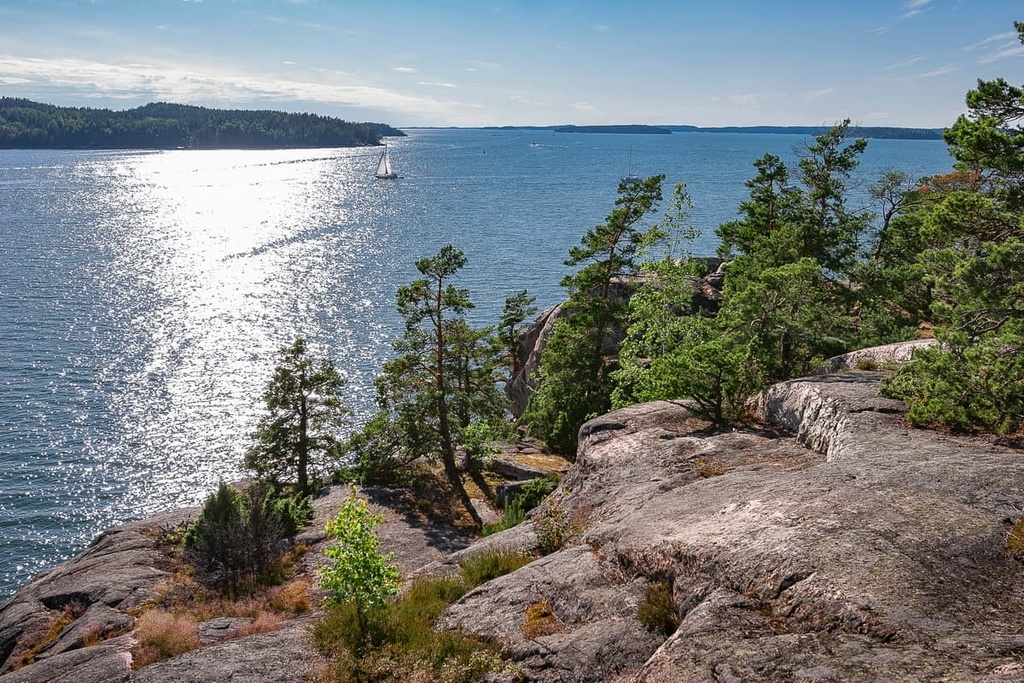
Southwest Finland has a rich history like no other in Finland, and its main city of Turku is considered the oldest city in the country. Here are brief highlights of the region’s history:
The region, like the rest of what is now Finland, was inhabited by hunters, fishermen and sailors starting around the Iron Age, but individual household items were found here even earlier.
Three main tribes inhabited these territories: the Finns, the Tavastians, and the Karelians. In turn, it is believed that all three tribes came here from the eastern borders of Europe.
For example, the famous Finnish actor Ville Haapasalo traveled to the Republic of Tatarstan in Russia in search of the ancestors of the Finns in one of his travel TV shows.
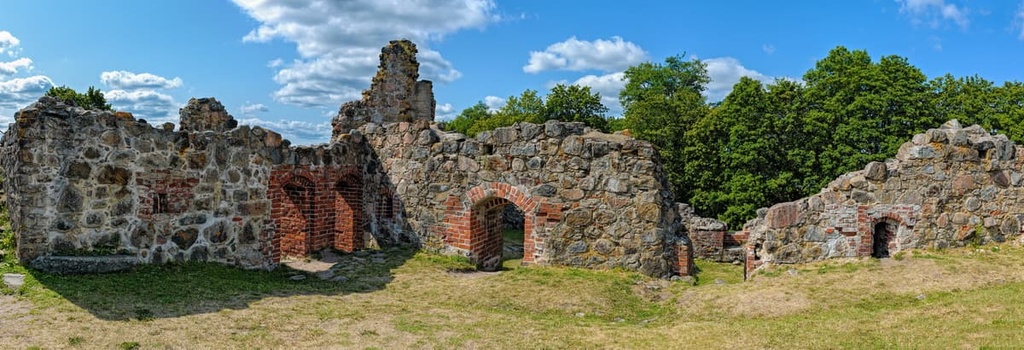
The region’s capital and the country’s first capital, Turku, was officially founded in the thirteenth century, though the settlement existed much earlier. During the Middle Ages, the city of Turku was part of Sweden under the general name Österland (“Eastern land”).
In the seventeenth century, two important things happened. First, in 1640, the first university was founded in Turku as the Royal Academy of Åbo (it is now the University of Helsinki). Second, the name Finland was used for the vast territory of the country, which had by then grown enormously in size.
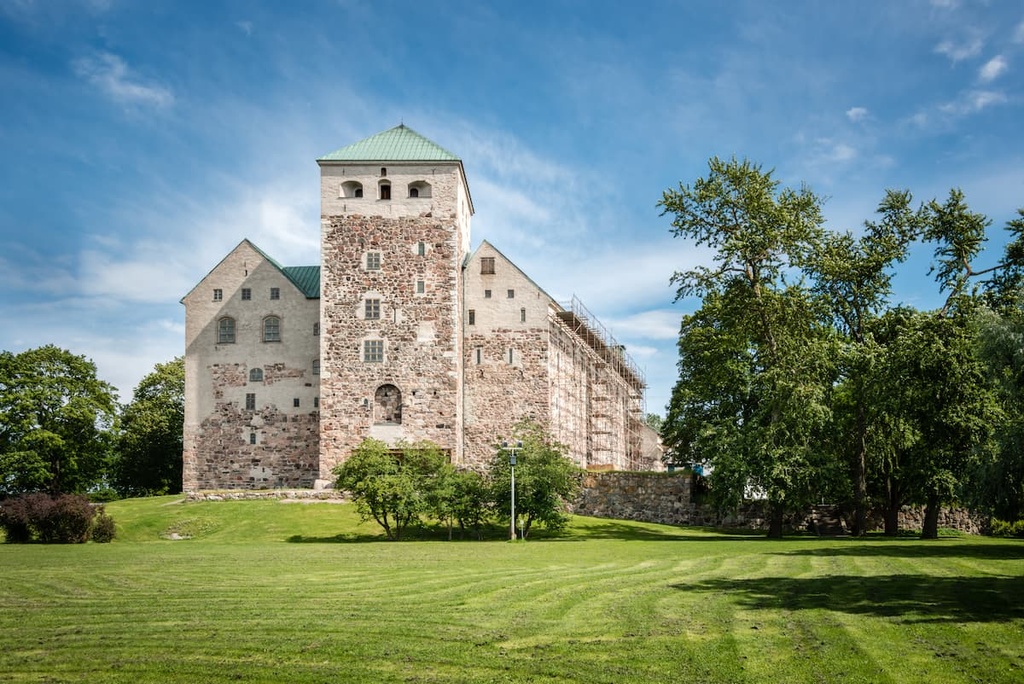
In 1809, following the Finnish War (February 21, 1808, to September 17, 1809) between Sweden and the Russian Empire, Finland became a part of the Russian Empire under the name of the Grand Duchy of Finland.
Almost immediately (but formally three years later, in 1812), the region of Southwest Finland practically lost its status as the capital in favor of Helsinki at the request of Russian Tsar Alexander I, who wanted to bring the Finnish capital closer to Russia and away from Sweden.
Finland gained independence from both of its neighbors after the collapse of the Russian Empire in 1917.
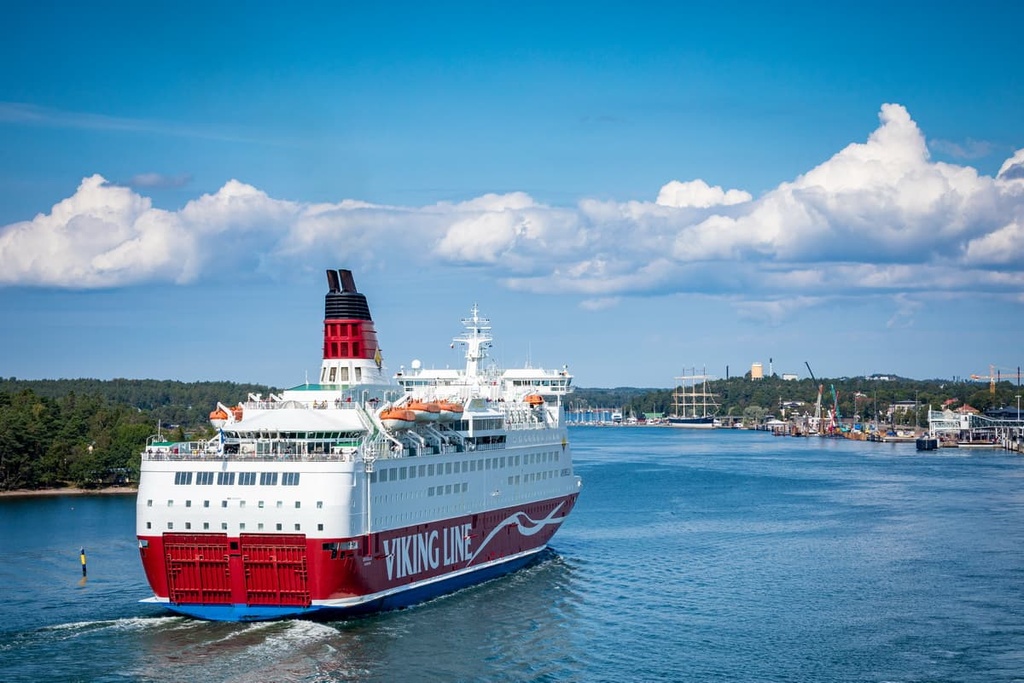
During the twenty-first century, the internal administrative regions of Finland have also undergone some changes.
A new separate region with the modern name Southwest Finland was formed only in 2010. Today, it is the third most populous region in the country with 479,341 people (2019) after Pirkanmaa (517,666 people) and Uusimaa (1,689,725 people), the latter of which is home to Helsinki.
That said, the ancient way of life of the region has survived to this day in Finland Proper. Much of the region is still dependent on the sea, either for fishing or for sailing. However, the inland parts of Finland Proper are much more focused on agriculture.
Most of the 202 named mountains in Southwest Finland are located on the mainland. They all belong to two of the five great geological layers or events that can be traced across Finland.
These geologic features and events include the Svecofennian orogeny, which formed the peaks that occupy almost the entire southern and central part of the country. The other major geologic feature is the Jotnian sediments, which refers to the geologic layers in eastern Southern Finland, in the northern part of the Archipelago Sea, and in the Åland Islands.
Since the highest peak in the region, Haukkavuori, east of Turku, is only 121 meters (396 feet) tall, you can easily climb almost all of the two hundred mountains in Southwest Finland. And if you have been to Finland or Sweden, you know that here the low height of the mountains is compensated by the magnificent views of the forests, the lakes, and in the case of this region, the sea, from their summits.
Other notable summits in the region Karhunsauna (88 m / 288 ft) and Kopanmaa (101 m / 331 ft), which are located almost in Kurjenrahka National Park—one of four national parks in the region. There are also two bird watching towers on the hills in the different parts of the park from which you can see the region’s bogs.
But even without leaving Turku, you can still easily find low rocky hills everywhere in this region. There are about fifty such hills throughout the center of Turku, ranging in height from 30 to 60 meters (98 to 197 feet). These high points are usually located in the middle of parks, which are called puisto in Finnish.
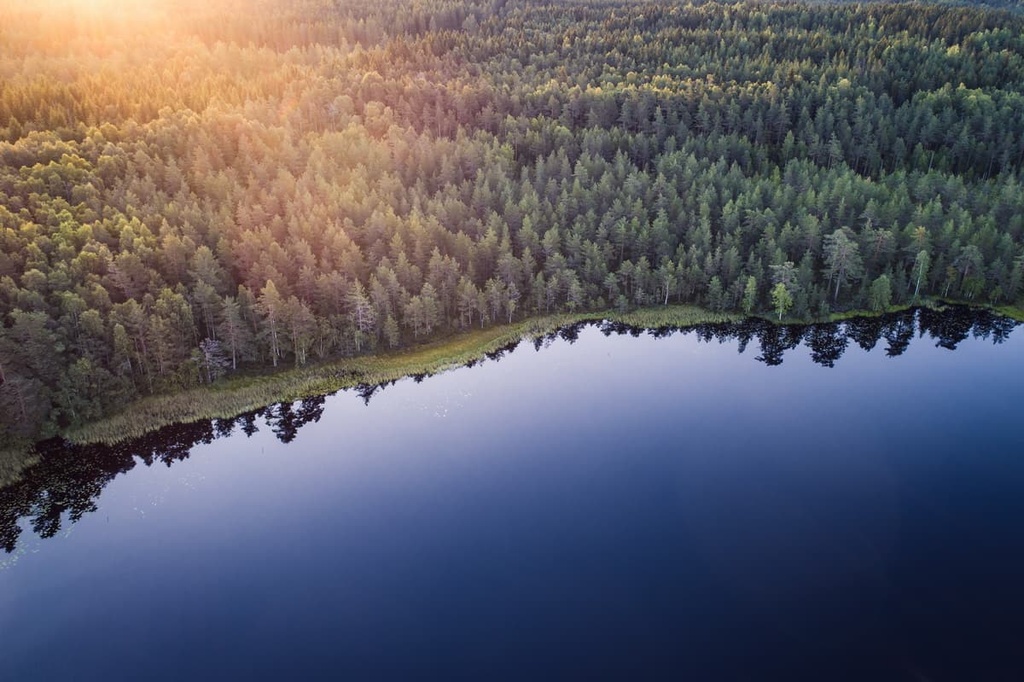
Individual islands with notable high points in the Archipelago Sea are also worth checking out. For example, the summit of Husbergen near the town of Nagu in the municipality of Pargas reaches a height of 60 meters (197 feet). From it, you can see many other islands in the vast Baltic Sea.
As elsewhere in Finland, there are plenty of great trails and historical sites to check out in Finland Proper. Here are some of the most popular hiking areas and destinations to visit:
There are several main hiking areas in the region in the area’s national parks. In addition to Archipelago National Park, which I have mentioned several times in this guide, there are three others:
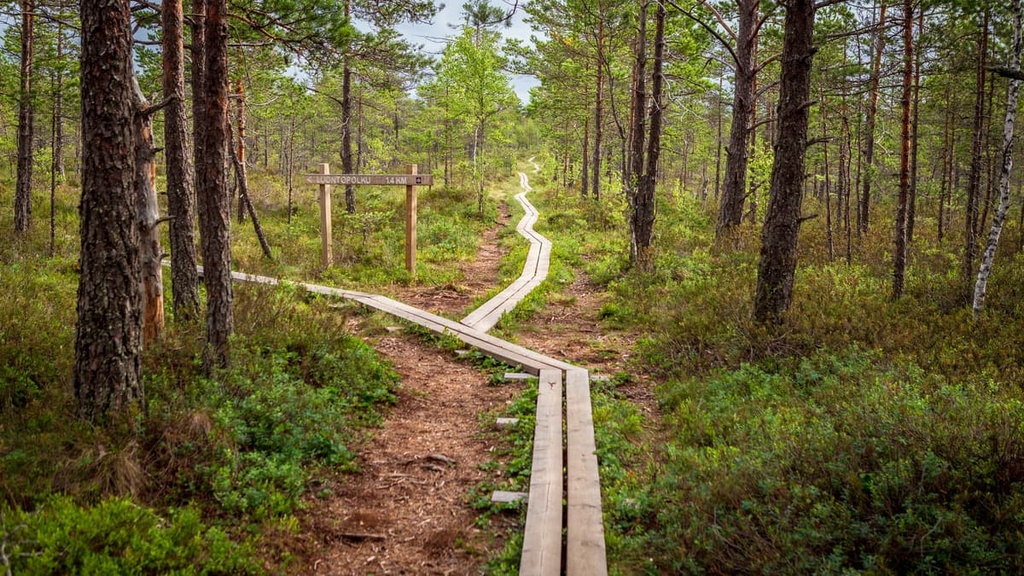
There are many hiking trails of varying lengths in the region. This includes both short nature trails and longer trekking routes.
Short nature trails can be found near almost every settlement, even in small villages, of Finland. For example, in Pargas municipality ,there are at least a dozen of them: Westerholm Path and Jungfrudansen Path in Nagu, Barefoot Path in Korpo, and Trollstigen Path in Gullkrona, among others.
Check out the full list of nature trails in Pargas for more information.
The region of Finland Proper is known for its long hiking and cycling trails. There are three main trails in the region:
Archipelago Trail
This is a cycling and driving route through the islands of the Archipelago Sea and Archipelago National Park with start and finish in the city of Turku.
The route has two options, including a hike that covers 120 km (74.5 mi) in 2–3 days and one that covers 250 km (155.3 mi) in 5–6 days. Between the islands, you need to cross the water by ferry. You can stay overnight in hotels in the villages on the islands, too.
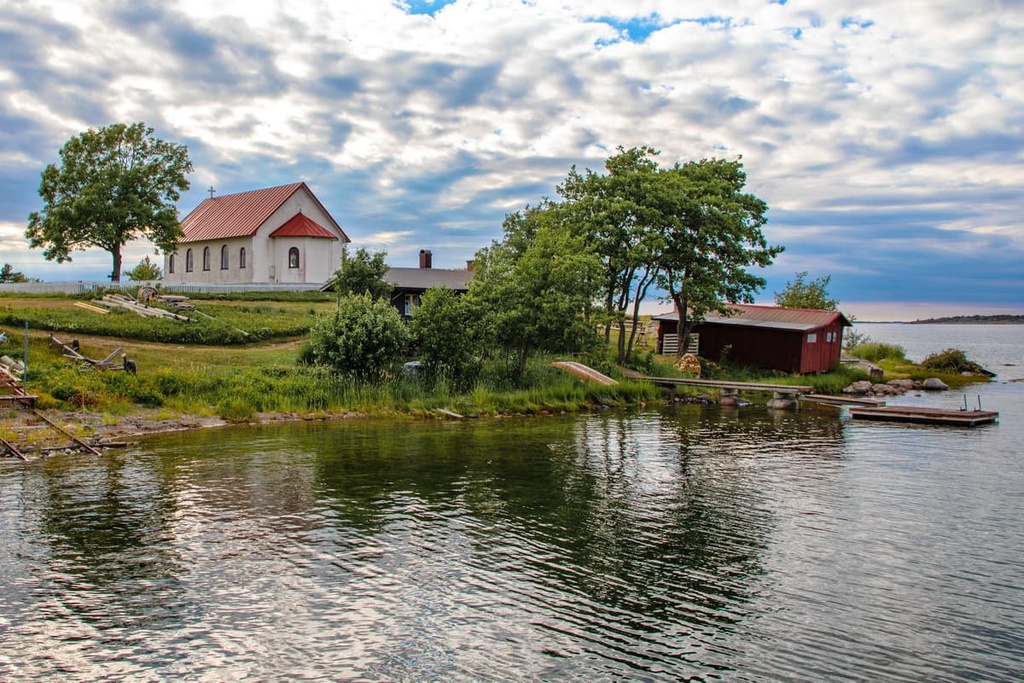
Te creators of the route are also working on a version of the Archipelago Trail for hiking through the fields and forests of the islands away from the roads. This will give visitors a glimpse into the remote corners of the archipelago, which you can’t see by car or even bicycle.
St. Olav Waterway (Nidaros Way)
This is a multi-day historical pilgrimage route from Turku Cathedral to Trondheim, Norway. The route is dedicated to Saint Olav, patron saint of Norway.
However, the Finnish part of the route to the city of Grisslehamn in Sweden was established in 2019. The route has also become the first pilgrim’s trail connecting Finland and Sweden over the sea.
The route runs through the islands of the Archipelago Sea, making a small detour to the island of Utö before heading to the Åland Islands. The total length of the route in Finland is 560.5 km (348 mi) or 138 hours (5.75 days) of blissful hiking. The entire route takes between 5 to 15 days to complete.

King’s Road
This is another historically important route that travels through the Finland Proper region. It follows a Middle Age mail road from Bergen, Norway, to Vyborg, Russia via Oslo, Stockholm, Åland Islands, Turku, and Helsinki. The distance of the Finnish part of the route from Turku to Vaalimaa on the border with Russia is about 400 km (250 mi).
On the route, you can see a lot of old manor houses, castles and forts, churches, bridges, and other similar constructions in the small old Finnish towns.
You can walk it, of course, but riding it on a bike only takes about 3–5 days.
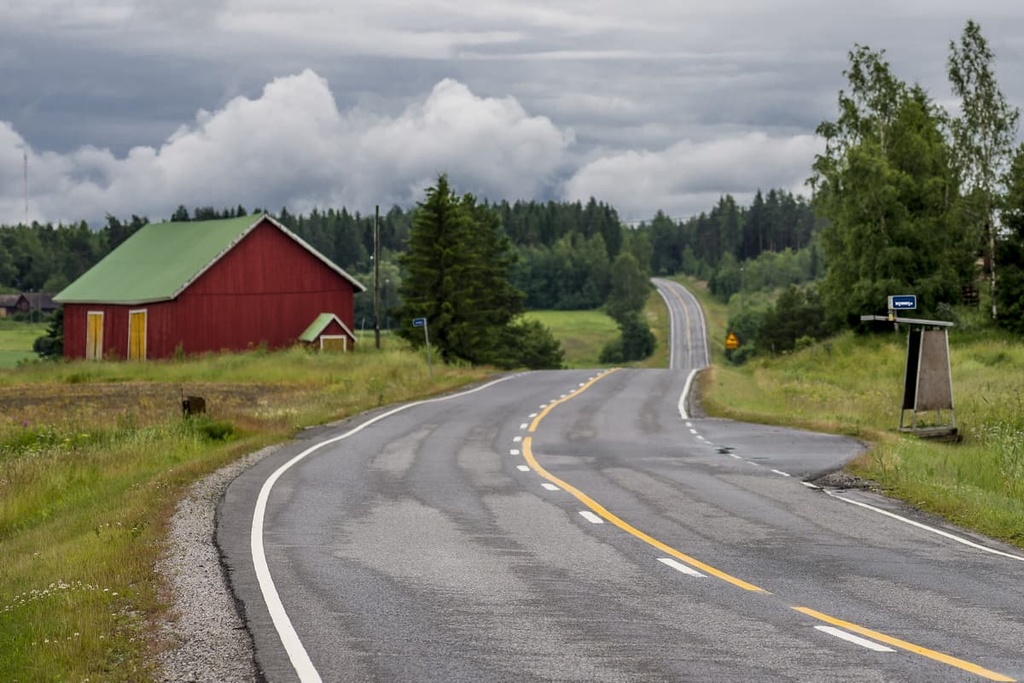
There are also several historical locations in the region that are important both to locals and on a global cultural scale. Just like the short nature trails in Pargas and other islands, they are suitable for those who are not going to travel hundreds of kilometers in Finland, but want to be in nature and experience the region’s rich history.
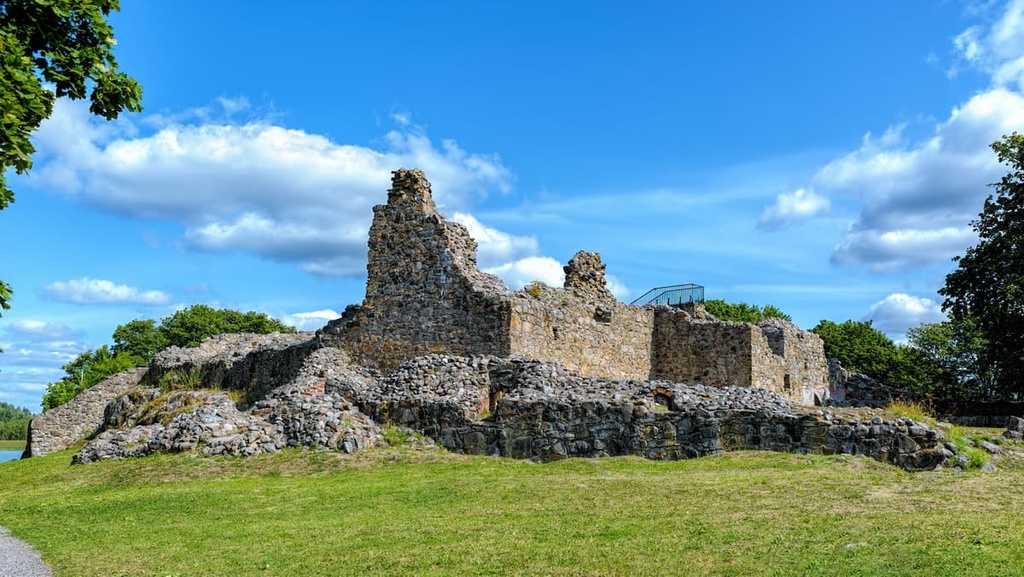
Southwest Finland is not a major skiing region in Finland. But there are some small ski resorts near Turku, the largest of which is Hirvensalo Ski Center. It is located about 5 km (3.1 mi) from the city.
Here you will find five trails of all difficulty levels. The longest of the slopes is 300 meters (984 feet) long, and the total length of trails is 1.5 km (0.9 mi). The vertical relief of the hill is 60 meters (196 feet).
Your journey through the Finland Proper will likely take you to its main city Turku. While there, be sure to stop by the local tourist office, where you can get more first-hand information (i.e. from the Finns themselves) and pick up paper maps of the region.
But, in my experience, it is even better just to meet the locals, who will give you the best tour of the city and the islands of the archipelago.
On my trip to Turku in July 2013, I spent a day in the company of two nice locals that I met through couchsurfing. One of them, also a travel journalist, drove me to meet her friends at an eco-village on Livonsaari Island. She didn’t know the way and we nearly got lost, but we did it, and it was the most incredible adventure of my life. That day, I also decided to become a travel author.
Seriously, Turku is a great place to find life-changing experiences, so don’t forget to stop by when you’re in the region!
Visit Turku Tourist Information
Monitori Market Square, Aurakatu, 8, 20100, Turku, Finland
+35822627444
Opening Hours:
As you travel through the Southwest Finland region, you can easily find accommodation in any of the cities, regardless of their size.
For a weekend or a longer visit, the most popular places to stay here are wooden cottages—a traditional type of summer accommodation in Finland. As a rule, these cottages are located on the shores of lakes or the sea and they almost always include a sauna. Some Finns, who love nature more than cities, live in them permanently.
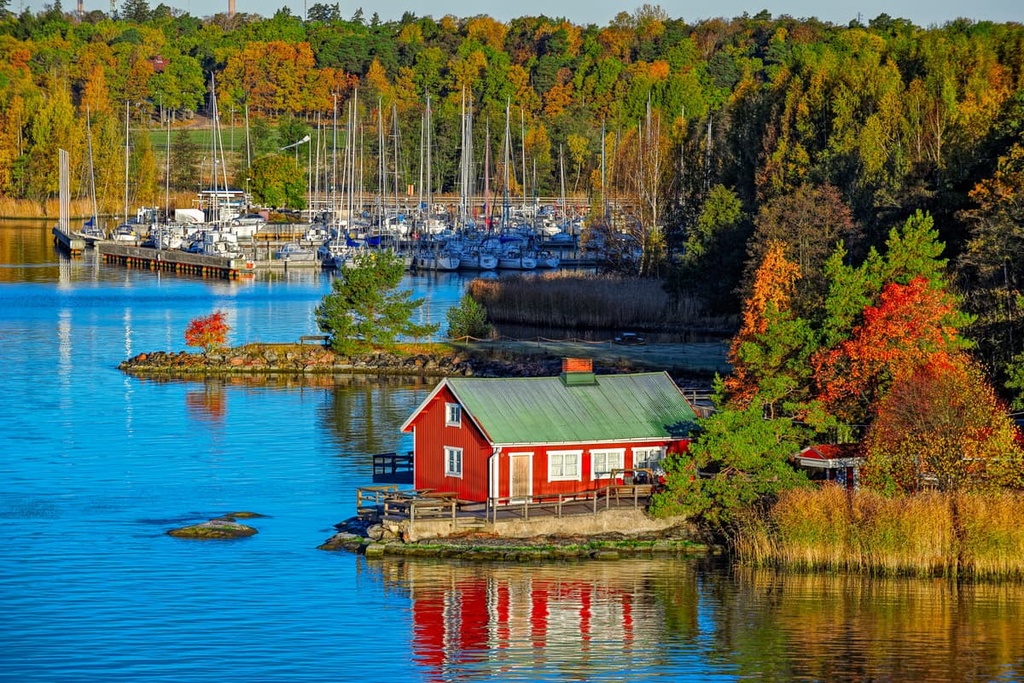
In national parks and other natural areas of the country, so-called wilderness huts are very common. They are of three main types:
For example, the Archipelago Sea National Park has three open wilderness huts on three different islands: Konungsskär, Notvarpharun, and Gärskär. However, there aren’t many huts in this part of Finland when compared to Lapland.
But you won’t be left without a bed in any case: in the same park, you’ll find 13 camping areas with facilities on the islands of Berghamn, Björkö and Dalskär, among others. There are also two campsites without amenities where you can pitch your tent on the Aspö Långlande and Österskär Små Sundskär island in Pargas municipality.
Last but not least, for those who travel by boat, there are several guest harbors in the Archipelago Sea.
Inside its territory the Finland Proper region is divided into 27 municipalities, 11 of which are cities, including Turku (Åbo), Naantali (Nådendal), Raisio (Reso), Paimio (Pemar), Pargas (Parainen), Kaarina (S:t Karins), Salo, Somero, Loimaa, Laitila (Letala), and Uusikaupunki (Nystad).
As you have already noticed, most of them have double Finnish-Swedish names because of close historical ties between the two countries. Swedish is the second official language in the country.
Here is some quick information about the three largest cities in the region:
Turku (Åbo) is the largest city in the region and the sixth-most populous in Finland, if you count the suburbs of Helsinki, Espoo, and Vantaa, as separate cities. The city has 195,350 inhabitants (2021).
It is located 167 kilometers (103 miles) from Helsinki, practically on the banks of the Aura River near the shore of Baltic Sea. In summer, the sea is “decorated” with a couple of old sailing ships, some of which operate as restaurants, and the city itself is considered the culinary capital of Finland.
The number one attraction of Turku is Turku Castle (thirteenth century). It is a true medieval castle where the Finns ruled the state before the capital was moved to Helsinki. Now it houses a museum of the history of Turku and the region.
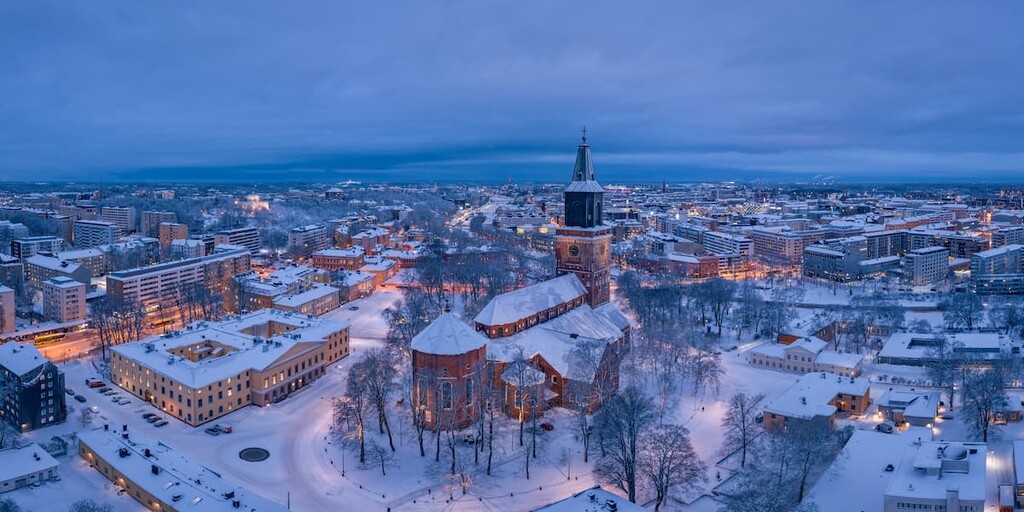
The official tourist website of Turku is VisitTurku.fi.
Naantali (Nådendal) is the second most famous city in the region, though it’s only home to 19,454 people (2021).
The city is also located on the shore of the Baltic Sea, approximately 16 km (9.9 miles) to the west of Turku. In contrast, it is literally a resort city, where life slows down in winter and, conversely, speeds up in summer.
The main attraction of Naantali (Nådendal) is Moomin World, a large children’s theme park dedicated to the Moomins—troll-like characters from the books by the Finnish writer Tove Jansson. While we are on the subject: The second important place connected with the writer is the world’s only Moomin Museum, which is located in Tampere.
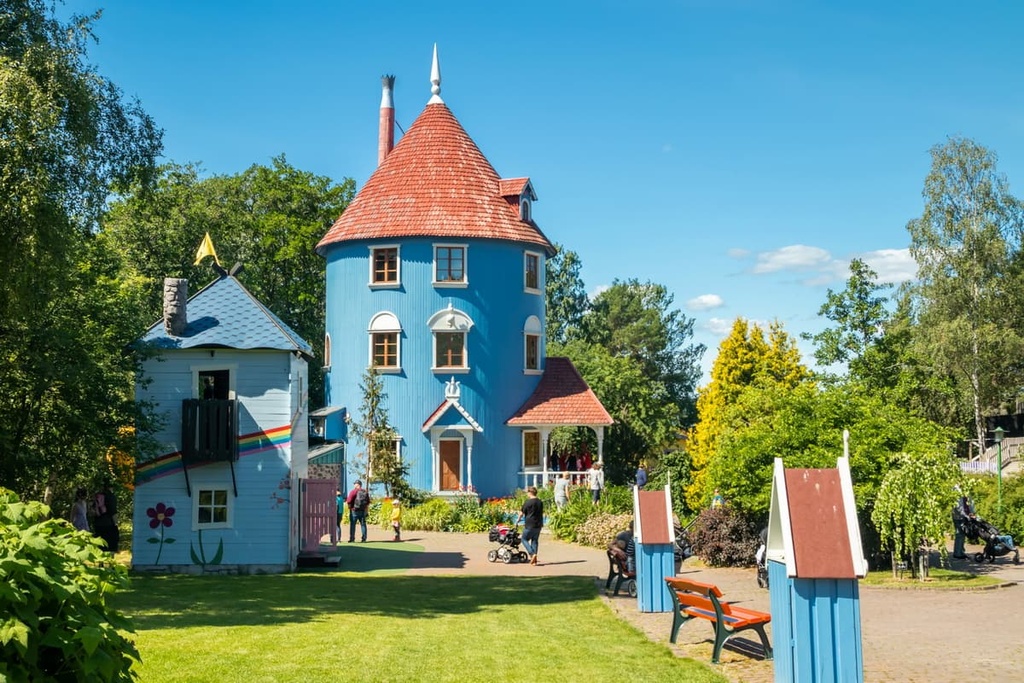
The official tourist site of Naantali is VisitNaantali.com.
Pargas (Parainen) is the third most important city and municipality in the region, with a population of 15,091 (2021).
The city is located 25 km (15.5 miles) to the south of Turku, and the entire municipality occupies many islands in the heart of the Archipelago Sea, making it the largest in the region (5,547 sq. km / 2,142 sq. mi). If you don’t get stuck in the restaurants of Turku or with the kids at Moomin World, you’re sure to find yourself here when you travel through the region.
The main attraction of Pargas (Parainen) is Utö Lighthouse, a huge lighthouse in the form of a 24-meter-high (78 feet) defensive tower, painted red and white as one of the sea signals flags, located on the island of the same name. It is the southernmost year-round inhabited island in the municipality, the Southwest Finland region, and the country as a whole.
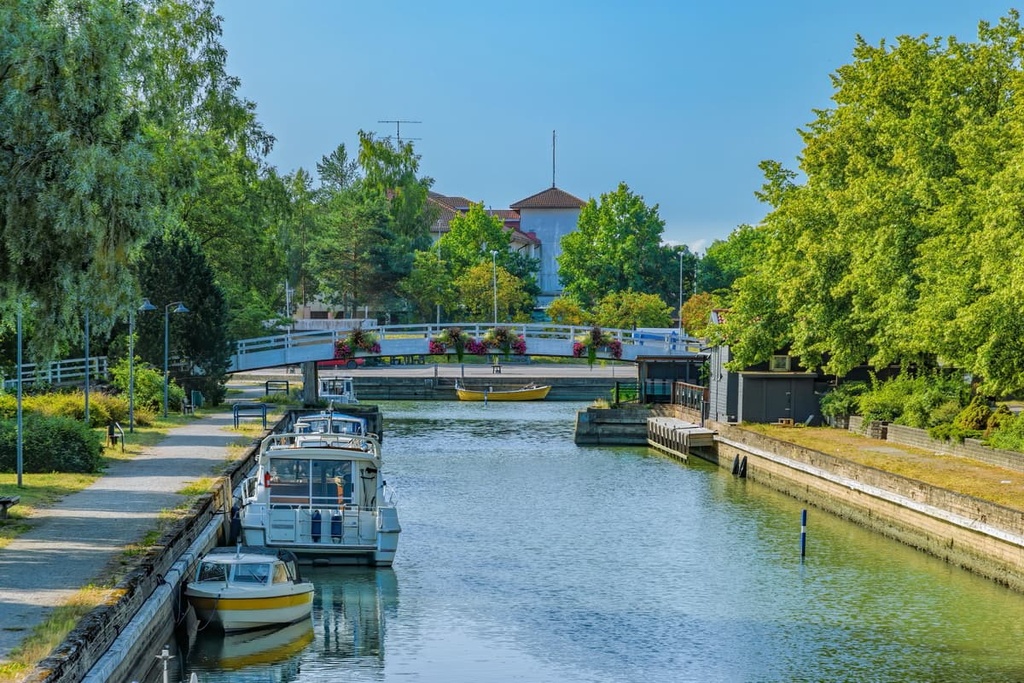
The official tourist site of Pargas is VisitParainen.fi.
Explore Finland Proper with the PeakVisor 3D Map and identify its summits.








